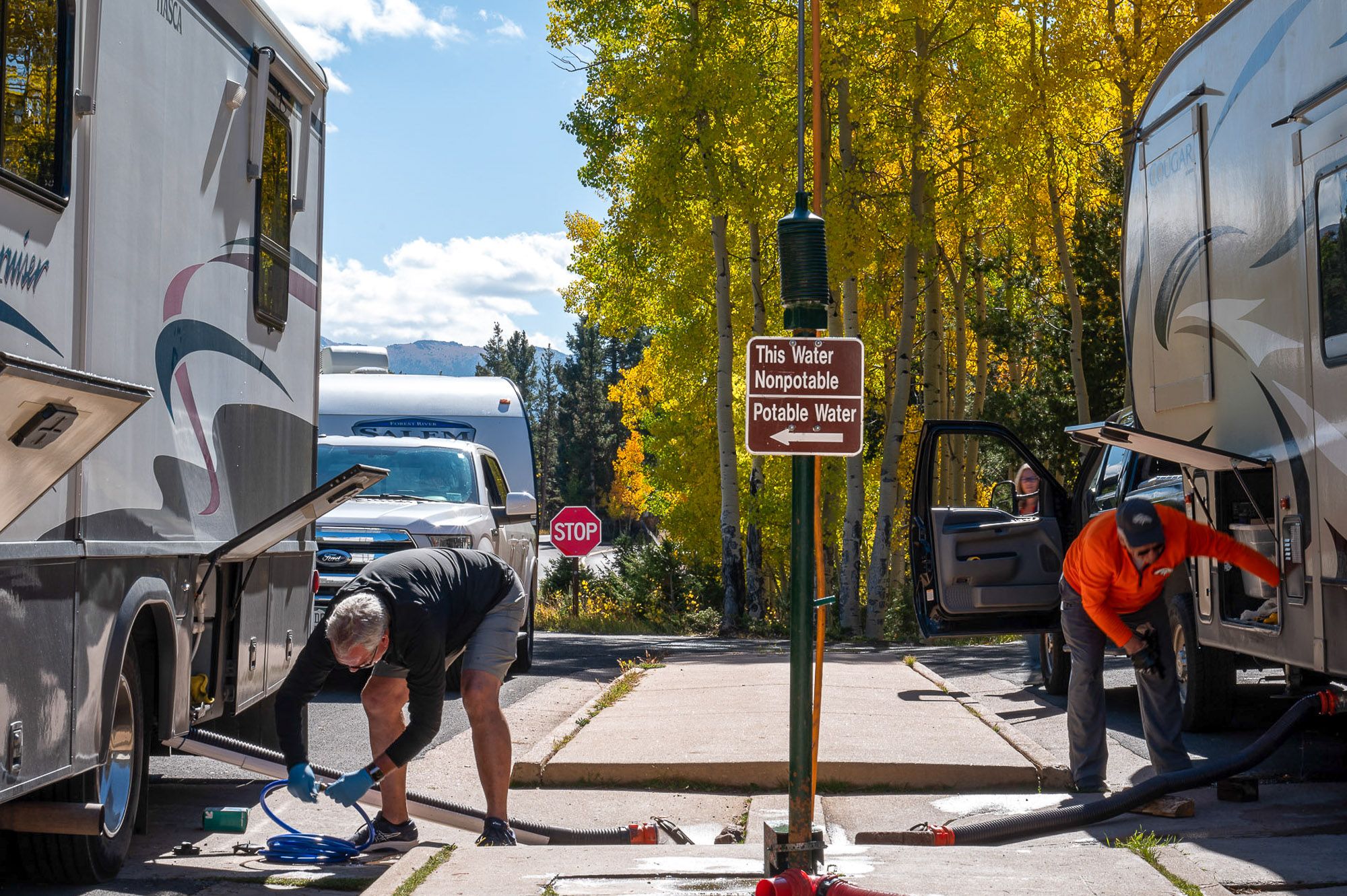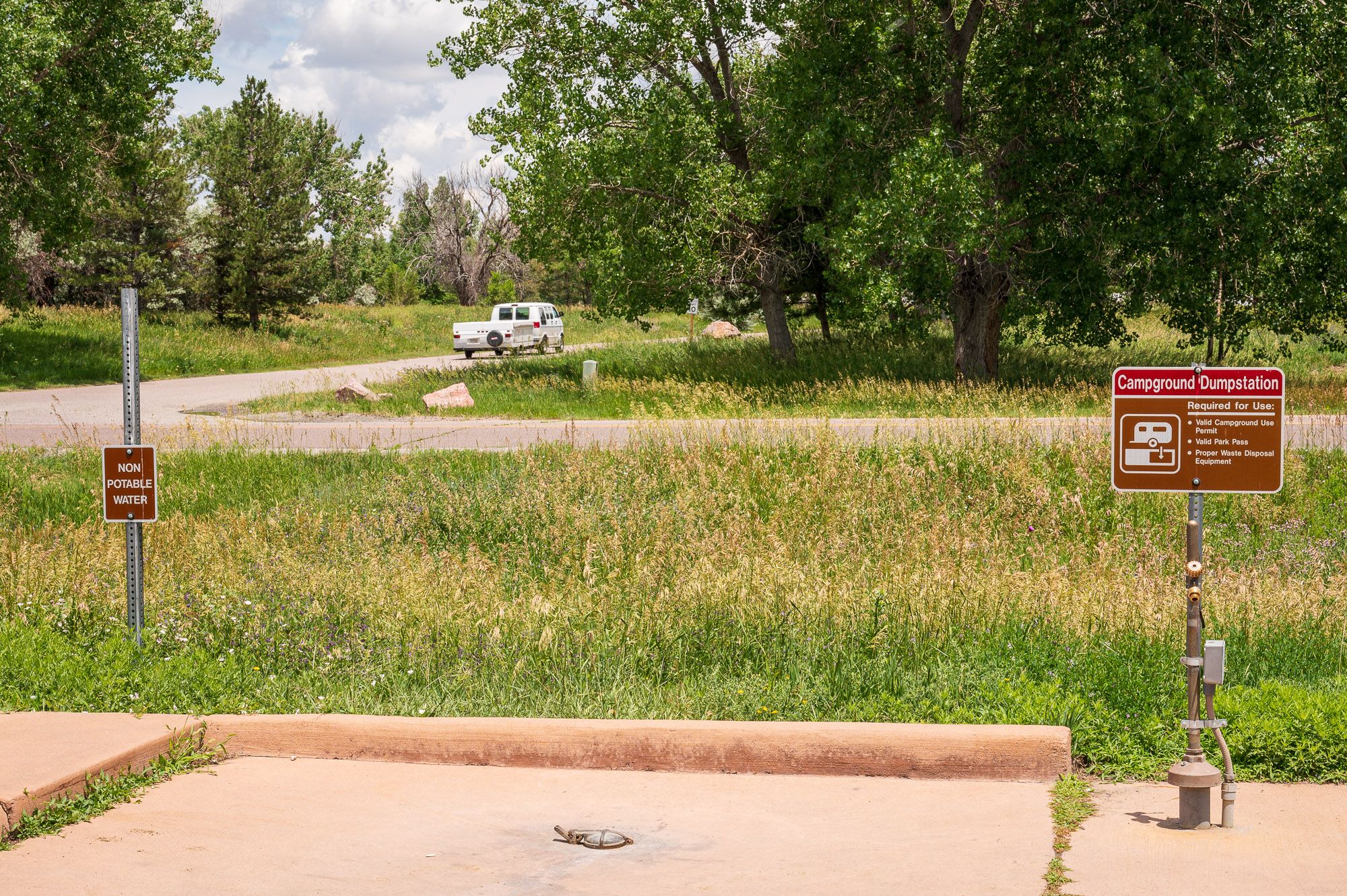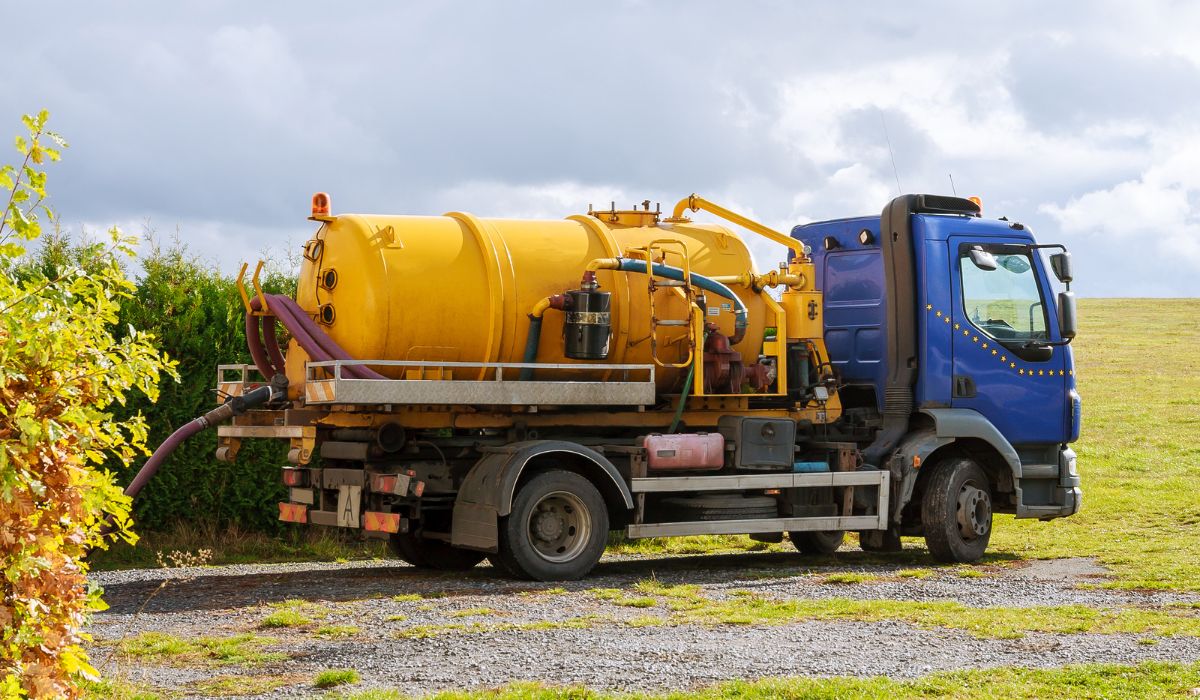RV travel and destinationsRV ownershipRV mods and DIY
How to Find an RV Dump Station Near You [RVezy Guide]
Posted on December 7, 2022
![How to Find an RV Dump Station Near You [RVezy Guide]](https://ghost-cdn.rvezy.com/2022/12/Find-an-RV-dump-station-near-me-min.jpg)
Looking for the easiest way to locate a dump station or potable water near you?
An RV dump station — sometimes called a sanitation station — is a communal septic tank designed to safely dispose of human waste and wastewater held inside an RV holding tank.
This article will provide the tools and tips to dump the black and gray tanks and fill the freshwater holding tank on your RV.
Let's get started.
How to find an RV dump station
If you're taking your RV camping without hookups, you'll likely have to find a dump station to dispose of your waste. Even though many campgrounds have full hookups or a dump station onsite, these facilities may not be available unless you're a paid guest.
Important! It’s unsanitary and illegal to dispose of RV waste outside a designated dump station or unapproved holding tank.

The most common places to dump are:
- Campgrounds with full hookups.
- Chambers of commerce.
- Gas stations.
- Marinas.
- Municipal parks.
- National park campgrounds.
- Independent and public campgrounds.
- Public and private sanitation facilities.
- Rest areas.
- RV resorts.
- RV storage facilities.
- RV supply or repair shops.
- State and provincial park campgrounds.
- Truck stops.
- Waste disposal station.
- Welcome and visitor centers.
Not all rest areas have a dump station or potable water, but the ones that do are often easy to access and free. The easiest way to locate a rest area near you is to use Google Maps to find your next rest stop.
Renting an RV and don't want to do the dirty work? Have your RV rental delivered and set up in a campground with full hookups.
The best apps and websites for finding an RV dump station
RV apps and websites simplify locating a place to dump and fill your holding tanks. Many of our favorite resources will help you find a dump station and provide helpful information such as the cost to dump, available services, and user reviews.
- Allstays.
- Boondocker's Bible.
- Campendium.
- iOverlander.
- Love's Travel Stops.
- Pilot Flying J.
- RV Dump Sites.
- RV Dumps.com.
- Sanidumps.
Want to know which apps RVers use the most? Check out the best RV apps for road trips.
How much does it cost to dump your tanks?
Most RV parks, public campgrounds, and RV resorts charge unpaid guests anywhere from $10 to $25 to use their dump station, but it's important to note that not every campground will allow you to use their dump, even if you offer to pay.
If you're lucky, you may be able to find a rest area or a waste disposal location that allows you to dump your tanks for free, but for the most part, assume you'll pay somewhere around $10 each time you want to dump your tanks somewhere other than a campground dump station.
Pro tip. Always have cash or a check on hand. Unfortunately, dump station facilities don't always accept credit cards or have the ability to give you change.
Need water? When the dump station has potable water available, you can fill your freshwater tank simultaneously at no extra charge. However, since every dump station operates differently, you may want to call and find out how much it will cost to fill your tank.
How do you dump your tanks?

- Park the RV close enough to the dump station so your hose can reach from the RV to the sewer pipe.
- Put on your disposable gloves.
- Make sure your holding tank valves are closed.
Pro tip. The holding tank valve releases liquid from the tanks. Don't use the end cap as a substitute for a closed holding tank valve.
- Attach the bayonet end of the sewer hose fitting onto the holding tank outlet.
- Attach the outlet end of the sewer hose to the dump station's sewer pipe.
- Double-check that the sewer hose connection is secure and will remain in place while releasing liquid.
- Slowly pull the black water holding tank valve handle until the valve is completely open.
- Wait until the tank drains.
- Close the holding tank valve.
Want more detailed instructions for cleaning your tanks? For a step-by-step guide, visit Everything You Need to Know About Your RV's Black Water Tank.
What amenities are available at an RV dump station?
RV dump stations almost always have pull-through access making it easy for you to get your trailer or motorhome close to the in-ground sewer pipe. Some RV dump stations have nothing more than a drain in the ground, while others have non-potable water and potable water faucets to clean your sewer hose and fill your freshwater holding tank.

Potable water
Not every dump station has water; when it does, it might not be safe for human consumption. If the water is potable, it is safe to drink or add to your freshwater tank. Non Potable water may be untreated or located too close to a sewer pipe to be considered safe to drink.
How do you know which water is safe for drinking?
When an RV dump station has two water faucets, the one farthest from the sewer drain will be potable. Sometimes, dump stations color code their faucets. For example, a blue or green faucet usually means the water is drinkable, and a red faucet means it's non-potable. Don't fill your tank if you're unsure if the water source is safe for consumption.
RV dump alternatives

What happens if you're attending an event like NASCAR or an RV rally, and you don't want to move your RV or take time to dump your tanks yourself? You can hire a mobile septic pump-out service — sometimes called a honeywagon — to clean your tanks for you.
If a honeywagon service isn't available, you can empty your tanks using a portable RV waste holding tank and walk or drive black or gray water to the dump station.
Frequently asked questions
Can you dump your RV at home?
It depends. Your local governing body would have to approve your request to install an at-home dump station or modify your septic tank to dump your tanks at home legally. Disposing of waste on the ground, retention pond, storm drain, home sewer clean out, or any other area not classified as an RV-dump site can contaminate the environment and put humans and animals at risk.
How frequently do you need to dump?
A good rule of thumb is to dump your tanks when they are 3/4 full or at least every three to five days when you're using the RV. Even with a tank treatment, it's never a good idea to let waste sit in your tanks, especially when you're not using the RV.
What do I do if my RV smells bad?
Tanks can become stinky if the bad bacteria outweighs the good bacteria or you don't run water through them periodically. Adding a dump tank treatment puts good bacteria into your tanks, breaks down the solid waste, and helps eliminate odors. When a tank is especially stinky, you may have to do a black tank flush or fill your tanks with water and dump them a few times in a row to help remove any material stuck inside.
How full do my tanks need to be before dumping?
It's best to fill your tank with water if you're ready to dump and your tank is below 3/4 full. The waste moves through the hose better when there is more water in the tank. When your RV has a separate black and gray holding tank, empty the black tank first, followed by the gray tank, to help push water through your sewer hose before putting it back in storage.
Other resources
Beginner's Guide for Reserving the Right RV Campsite
How to Winterize Your RV
How to Clean Your RV Like a Pro
